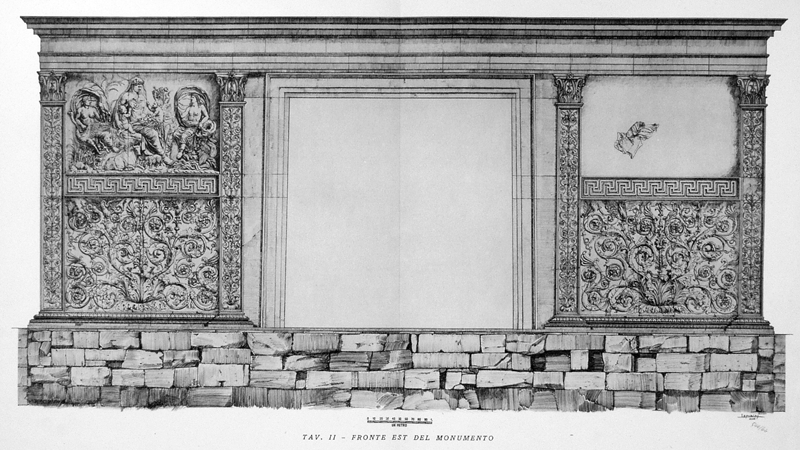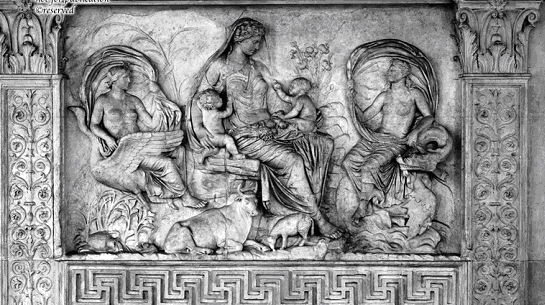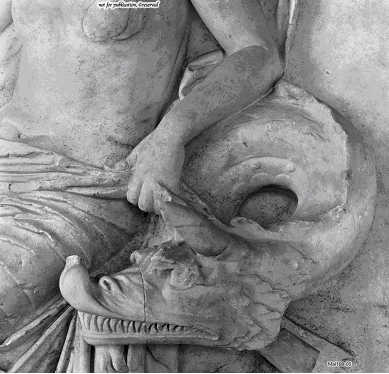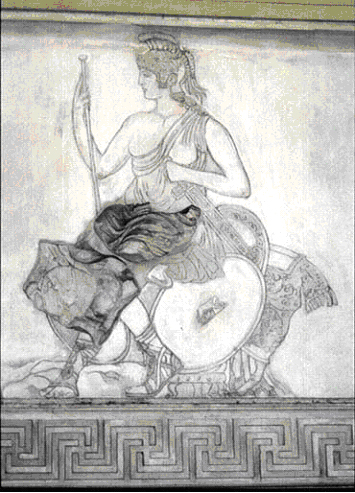The Eastern Wall of the Ara Pacis

Like many other figures of feminine fertility and abundance, the central figure is seated amid abundant vegetation. She is flanked by two companion figures on the right and left who, with billowing veils, are seated on a sea creature and a swan or goose. (Galinsky 148). A cow and a sheep are at the feet of the central figure. To varying degrees, the iconography draws on that of Mother Earth (Tellus), Venus, Ceres, and possibly even Pax herself. Considering it as alter dedicated to peace, one would think the central figure ought to be Pax. While most altars dedicated to peace do include a representation of Pax, the Ara Pacis Augustae illustrates peace through victory brought about by Augustus.

With the two children on her lap, she strongly resembles Venus Genetrix, the mother of the Julian family. (Cooley 232).
The figures to the left and right, which represent air and sea, may indicate that the seated figure is Terra, or mother earth. The figures all sit above their respective icons showing roman dominance over them.
Likely, the identity of the seated figure was not meant to be absolute. Like many of the images of the Ara Pacis, the image on this relief is complicated and multi-layered.


The presence of these representations of the elements water and air, along with the representation of the element earth through the lush vegetation, all support the notion that the depicted woman is indeed Tellus (Mother Earth).
Detail of a bird figure, representative of the element air, beneath the figure on left.
Detail of Sea Serpent, representative of the element water, beneath figure on the right.

In this figure we see the goddess Roma sitting on top of a pile of accumulated arms, which have been acquired in the process of war (Galinsky 148). The presence of such an image on an altar dedicated to peace at first may seem out of place. Most agree that this image of war, namely victory in war, was included to illustrate the Augustan belief that peace was only viable through successful warfare. This is slightly different from the modern image of peace, which can be accomplished through a variety of means other than warfare.
Notice that most of this relief has been lost through the ages. The image of Roma has been completed by stencil of what scholars privy to altar have agreed upon from evidence in historical description.